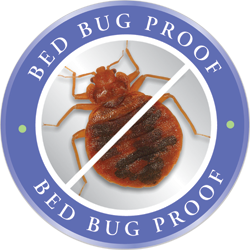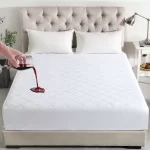Be Prepared: Battling Bed Bugs Before They Bite

Introduction
As the seasons change, so do the challenges we face in maintaining a comfortable living environment. One of the most unwelcome guests that can invade your home is the bed bug. These tiny, blood-sucking pests are notorious for their resilience and ability to infest homes unnoticed. However, fear not! With proper preparation and awareness, you can safeguard your home and ensure a good night’s sleep. In this blog post, we’ll explore effective strategies to prepare for the bed bug season and protect your home from these nocturnal nuisances.
Understanding Bed Bugs
Before diving into prevention methods, it’s essential to understand your enemy. Bed bugs are small, reddish-brown insects that feed on the blood of humans and animals. They are excellent hitchhikers, often traveling from one place to another through luggage, clothing, and used furniture. Bed bugs are most active at night, and their bites can cause itchy, red welts, leading to discomfort and sleepless nights.
**1. ** Educate Yourself
Knowledge is power when it comes to battling bed bugs. Learn about their habits, appearance, and common hiding spots. Knowing what to look for can help you identify an infestation early, making it easier to eradicate the problem before it spreads.
**2. ** Inspect Your Home Regularly
Regular inspections are crucial to preventing bed bug infestations. Check your mattress, box springs, and bed frame for signs of bed bugs, such as tiny bloodstains, fecal spots, or discarded exoskeletons. Additionally, inspect other areas where bed bugs are known to hide, such as cracks, crevices, and upholstered furniture.
**3. ** Practice Good Hygiene
Maintaining a clean and clutter-free home can significantly reduce the likelihood of bed bugs taking residence. Vacuum your carpets, rugs, and upholstery regularly, and dispose of the vacuum bag immediately. Launder your bedding, curtains, and clothing in hot water, and dry them on the highest heat setting to kill any potential bed bugs and their eggs.
**4. ** Be Cautious When Traveling
Bed bugs often hitch a ride on luggage and clothing, making hotels and public transportation common sources of infestations. When traveling, inspect your hotel room thoroughly before unpacking. Keep your luggage off the floor and use luggage racks or protective covers. When returning home, unpack your luggage outside and wash all your clothing immediately.
**5. ** Seal Entry Points
Sealing cracks, crevices, and gaps in walls, baseboards, and windows can prevent bed bugs from entering your home. Use caulk to seal these openings, paying special attention to areas where pipes and wires enter your home.
**6. ** Consider Professional Help
If you suspect a bed bug infestation or want to ensure your home is bed bug-free, consider hiring a professional pest control service. Experienced exterminators have the knowledge, tools, and treatments necessary to eliminate bed bugs effectively and prevent future infestations.
**7. ** Bed Bug Protection Products If You Suffer An Infestation
Cover and Protect a complete range of Bed bug protection products for the house if you do suffer from Bed Bug infestation. Please click link to visit our store
Conclusion
By staying informed, vigilant, and proactive, you can prepare your home for the bed bug season and protect your family from these persistent pests. Remember to educate yourself, conduct regular inspections, practice good hygiene, be cautious when traveling, seal entry points, and seek professional help if needed. With these strategies in place, you can rest easy, knowing that your home is a bed bug-free sanctuary. Sweet dreams!
Article by Cover and Protect the bedding protection specialists




